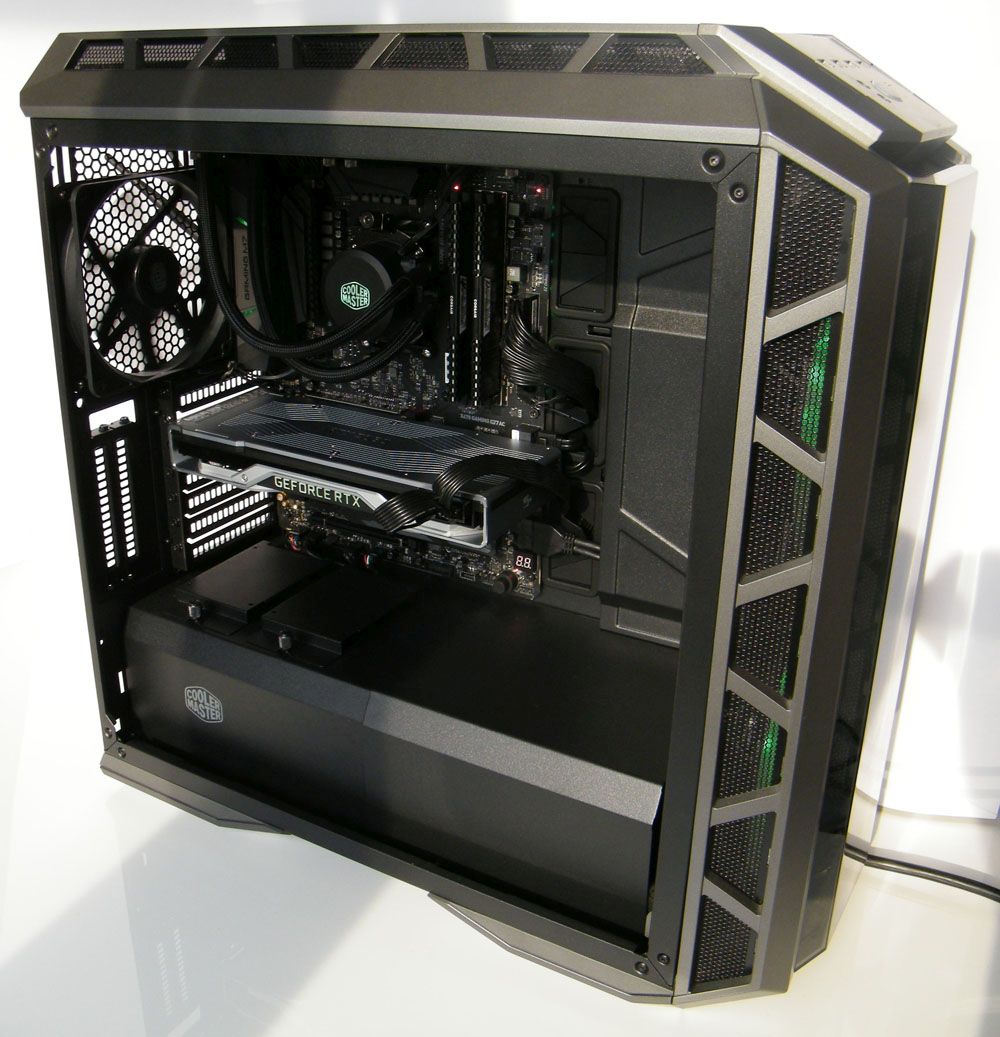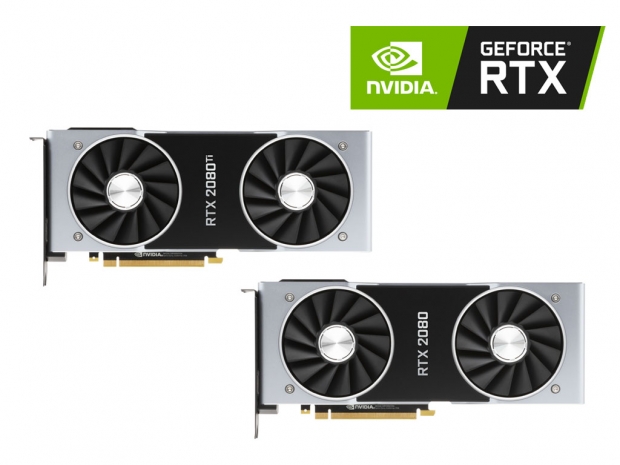Index
- Nvidia Geforce RTX-series is born
- Turing architecture and RTX series
- The new Turing architecture in more details
- Shader improvements and GDDR6 memory
- Nvidia RTX Ray Tracing and DLSS
- The Geforce GTX 2080 Ti and GTX 2080 graphics cards
- Test Setup
- First performance details, UL 3DMark
- Shadow of the Tomb Raider, Assassin’s Creed: Origins
- The Witcher 3, Battlefield 1
- F1 2018, Wolfenstein II: The New Colossus
- Power consumption, temperatures and overclocking
- Conclusion
- All Pages

Test Setup
We are in a process of changing the system which also took a lot of time to retest, which is why we did not have a chance to do as many games or detailed testing of some other features, but hopefully, we will get to that eventually.
The Nvidia Geforce RTX 2080/2080 Ti benchmarks were done with Nvidia's 411.51 press driver. This one should be the same as the new Geforce 411.63 WHQL driver posted by Nvidia.
Processor
- AMD Ryzen 7 2700 8-core/16-thread AM4 at stock 3.2GHz base - provided by AMD
Motherboard
- MSI X470 Gaming M7 AC - provided by AMD
Memory
- Corsair Vengeance LPX DDR4 16GB (2x8GB) 3000MHz @ 15-17-17-35 at 1.35V
Storage
- ADATA XPG SX8200 M.2 480GB SSD
Case
- Cooler Master MasterCase H500P - provided by Cooler Master
Cooling
- Cooler Master MasterLiquid ML240L RGB - provided by Cooler Master
Power Supply
- Cooler Master V750 - provided by Cooler Master
Graphics cards
- Nvidia RTX 2080 FE and RTX 2080 Ti FE - provided by Nvidia
- Nvidia 10-series Geforce GTX 1080 Ti FE, GTX 1080 FE, GTX 1070 Ti and GTX 1070
- Sapphire Radeon RX Vega 64 8G
Drivers
- Nvidia RTX 2080 and RTX 2080 Ti - Nvidia Geforce 411.51 press driver
- Nvidia GTX 1080 Ti, GTX 1080, GTX 1070 Ti, GTX 1070 - Geforce 399.24 WHQL
- AMD Radeon Vega 64 - 18.8.2 WHQL




